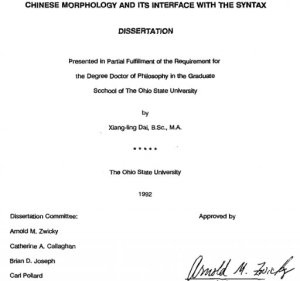Publisher: Ohio State University.
Publication date: 1992.
Number of pages: 306.
Publication date: 1992.
Number of pages: 306.
This work studies the word structure of Chinese to justify three distinctions and posit them as language universals: syntax vs. morphology, compounds vs. phrases, and derivational morphology vs. inflectional morphology. Chinese is chosen because linguistic tradition holds that the language has little morphology except for compounding, that the inteal structure of its compounds is simply a reflection of its phrasal syntax, and that Chinese has no inflection..
With universal notions developed for affixes, words, compounds and clitics, an investigation of compounding, derivation and inflection in Chinese is conducted. This study shows that principles goveing word structure and phrase structure in Chinese are distinct, with respect to alteative ordering of constituents, the ability to change lexical categories, reference to phonology, acceptance of optional dependents, suppression of constituents, and tolerance of exceptions to rules.

